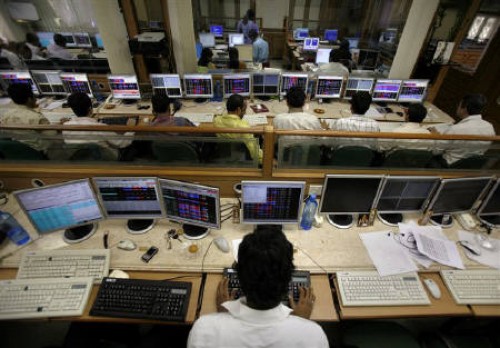Gold trading range for the day is 62025-63265 - Kedia Advisory

Gold:
Gold faced a decline of -0.64%, settling at 62562, influenced by the robust U.S. labor market and higher wages, which disappointed investors anticipating a Federal Reserve rate cut in March. The impressive 353,000 rise in U.S. nonfarm payrolls and an unchanged 3.7% unemployment rate defied expectations of an increase to 3.8%, causing a significant drop in market expectations for a March rate cut. The CME FedWatch Tool now indicates only a 21.5% chance of easing, down sharply from 34% last week when markets were almost evenly split on the possibility of a rate cut. In India, physical gold buying remained sluggish as jewelers awaited a potential import duty cut, and retail consumers hesitated due to elevated prices. Conversely, China, the top consumer, witnessed strong demand during the festive period, with reduced discounts from dealers compared to the previous week. Technically, the gold market experienced long liquidation, marked by an -8.17% drop in open interest, settling at 14394, coupled with a price decline of -403 rupees. Gold is now finding support at 62290, and a breach below could lead to a test of 62025 levels. On the upside, resistance is expected at 62910, with a move above potentially pushing prices to 63265. The technical overview indicates a bearish sentiment with reduced open interest and a price drop, emphasizing caution for traders in the current market conditions influenced by global economic indicators and central bank policies.
Trading Ideas:
* Gold trading range for the day is 62025-63265.
* Gold dropped as the U.S. labor market continues to fire on all cylinders.
* Higher wages are creating further disappointment for investors expecting Fed to cut rates in March.
* U.S. nonfarm payrolls rose by 353,000 last month
Silver:
Silver prices experienced a notable decline of -1.4%, settling at 71208, triggered by robust U.S. economic data. The U.S. economy added a staggering 353K jobs in January, surpassing market expectations of a 180K increase, and the unemployment rate remained at a steady 3.7%, defying the anticipated rise to 3.8%. Chair Jerome Powell's comments during the Federal Reserve meeting further dampened expectations for rate cuts in March, asserting that it's unlikely the committee will identify March as the time for such measures. Powell's statements contributed to a shift in market sentiment regarding future monetary policy. On the global front, the silver market is expected to experience a 9% easing in the deficit to 176 million troy ounces in 2024. A 4% recovery in mine output is projected to offset rising demand, with silver being a crucial component in various industries such as jewelry, electronics, electric vehicles, and solar panels. Despite the projected reduction in the deficit, silver is still anticipated to face its fourth consecutive year of a structural market deficit due to sustained strong industrial consumption. Technically, the silver market is characterized by fresh selling, indicated by an 18.07% increase in open interest, settling at 29139. The price decline of -1010 rupees positions silver with support at 70505, and a breach below may lead to a test of 69800 levels. Resistance is anticipated at 72165, with a move above potentially pushing prices to 73120. The technical overview underscores the bearish sentiment, marked by increased open interest and a significant price drop.
Trading Ideas:
* Silver trading range for the day is 69800-73120.
* Silver dropped as US economy added more jobs than expected in January.
* The US Fed opted to keep rates stable and shifted from a 'tightening' bias to a neutral stance.
* The jobless rate held steady for a second consecutive month at 3.7%, and wage growth unexpectedly accelerated.
Crude oil:
Crude oil witnessed a significant downturn, settling at 6030, marking a -2.84% decline. The bearish trend was influenced by concerns over China's economic growth and global efforts to establish a ceasefire in the Middle East. OPEC+ announced that it would keep its output policy unchanged, deciding in March whether to extend the voluntary oil production cuts of 2.2 million barrels per day (bpd) set for the first quarter. The lingering worries about China's economic recovery were underscored by the International Monetary Fund's forecast of a slowdown to 4.6% growth in 2024 and a further decline to approximately 3.5% in 2028. In the U.S., crude oil shipments via rail in November declined by 25,000 bpd to 241,000 bpd, according to the U.S. Energy Information Administration. Additionally, U.S. crude stocks rose by 1.2 million barrels to 420.7 million barrels in the week ended January 26, as refineries recovered from freezing weather, defying expectations of a 217,000-barrel draw. Technically, the crude oil market is characterized by fresh selling, indicated by a substantial 54.73% increase in open interest, settling at 13618. The price decline of -176 rupees positions crude oil with support at 5940, and a breach below may lead to a test of 5849 levels. Resistance is expected at 6161, with a move above potentially pushing prices to 6291. The technical overview suggests a bearish sentiment, marked by the surge in open interest and a significant price drop. Traders should closely monitor geopolitical developments, OPEC+ decisions, and economic indicators to navigate the dynamic crude oil market effectively in the coming weeks.
Trading Ideas:
* Crudeoil trading range for the day is 5849-6291.
* Crude oil fell on China’s growth fears and efforts of ceasefire in Middle East
* OPEC+ currently has output cuts of 2.2 million barrels per day in place for the first quarter
* U.S. shipments of crude oil via rail in November decreased by 25,000 barrels per day
Natural gas:
Natural gas prices climbed by 1.52%, settling at 173.9, driven by forecasts of seasonally cold weather later in February. The anticipation of colder temperatures in mid-February is expected to boost heating demand, supporting the upward movement in natural gas prices. Despite current meteorological expectations of warmer-than-normal weather, the outlook for colder conditions later in the month contributed to the positive market sentiment. In the U.S., utilities pulled 197 billion cubic feet of natural gas from storage in the week ending January 26, surpassing market expectations of a 194 bcf draw. This decrease reduced stockpiles to 2.659 trillion cubic feet (tcf), which is 54 bcf higher than last year at this time and 130 bcf above the five-year average of 2.529 tcf. The current storage levels are within the five-year historical range, indicating a balanced market. Looking ahead, U.S. natural gas storage is projected to reach 1.942 tcf by the end of the winter withdrawal season on March 31, the highest since 2020. Financial company LSEG reported a rise in gas output in the U.S. Lower 48 states to an average of 104.7 billion cubic feet per day (bcfd) in February, up from 102.0 bcfd in January but still below the monthly record high of 106.3 bcfd in December. Technically, the natural gas market is experiencing short covering, with a -3.85% drop in open interest, settling at 66286, while prices are up by 2.6 rupees. Natural gas is finding support at 170.5, and a breach below may lead to a test of 167.1 levels. Resistance is expected at 176.3, and a move above could see prices testing 178.7.
Trading Ideas:
* Naturalgas trading range for the day is 167.1-178.7.
* Natural gas gains amid forecasts for seasonally cold weather later this month.
* US utilities withdrew 197 billion cubic feet of natural gas from storage
* Current stockpiles of natural gas are 54bcf higher than last year and 130bcf above the five-year average.
Copper:
Copper prices experienced a decline of -0.65%, settling at 722.05, driven by multiple factors including concerns about demand in China, patchy global industrial activity, and expectations of prolonged higher U.S. interest rates. Worries persist over China's real estate sector and the trajectory of U.S. Federal Reserve policy, contributing to the overall sentiment of reduced demand for the industrial metal. The impact of slowing activity is evident in the copper inventories in warehouses monitored by the Shanghai Futures Exchange, which rose by 36% to their highest level since July. The LME cash copper's discount to the three-month contract reached a record high of $109, indicating weak demand. Despite this, copper found some price support as stocks in LME-registered warehouses continued to decline, reaching their lowest level since September. Copper output in Chile, the world's largest producer, remained unchanged year-on-year in December at 495,537 metric tons, as reported by the country's INE statistics agency. However, manufacturing production in Chile decreased by 1.8% during the same period, reflecting challenges in the industrial sector. China, the world's top copper consumer, faced unexpected tightness in copper concentrate supplies following the closure of a major copper mine in Panama, just as smelters were looking to expand output. Technically, the copper market is under fresh selling pressure, as evidenced by a 5.52% increase in open interest, settling at 4892, while prices declined by -4.7 rupees. Copper is finding support at 720, with a potential test of 717.8 levels if this support is breached. Resistance is expected at 725.2, and a move above could lead to a test of 728.2.
Trading Ideas:
* Copper trading range for the day is 717.8-728.2.
* Copper fell on concerns about demand China, patchy global industrial activity
* Copper inventories in Shanghai Futures Exchange warehouses are up 36%
* Ongoing worries about China's real estate sector and Fed policy are impacting demand
Zinc:
Zinc prices settled down by -0.84%, closing at 219.05, primarily driven by a 23.10% increase in inventories in warehouses monitored by the Shanghai Futures Exchange. The surge in stockpiles added pressure to zinc prices, compounded by data revealing a contraction in manufacturing activity in China and a stronger U.S. dollar. Federal Reserve Chair Jerome Powell's announcement ruling out a rate cut at the March meeting further dampened market sentiment, as participants had previously hoped for monetary easing. Global manufacturing activity presented a mixed picture, with the United States experiencing momentum due to new orders, while soft demand in China left Asia's economies on shaky ground. Swedish miner Boliden's decision to shrink operations and reduce targeted output at its Tara zinc mine in Ireland added to concerns in the market. The mine, Europe's largest zinc mine, was put on care and maintenance in June amid three-year low zinc prices. Boliden has initiated talks with staff for a planned resumption in the second quarter of this year. Despite these challenges, the International Lead and Zinc Study Group (ILZSG) reported an increase in the global zinc market deficit to 71,600 metric tons in November 2023 from 62,500 tons in October, highlighting potential tightening of zinc supply. Technically, the zinc market is undergoing fresh selling, with a 13.01% increase in open interest, settling at 3996, while prices declined by -1.85 rupees. Zinc is finding support at 218, and a breach below may lead to a test of 216.8 levels. Resistance is expected at 220.7, and a move above could see prices testing 222.2.
Trading Ideas:
* Zinc trading range for the day is 216.8-222.2.
* Zinc dropped amid as SHFE inventories rose 23.10% from last Friday
* Data showed contraction in manufacturing activity in China and a stronger dollar
* Global factories delivered a largely patchy performance at the start of 2024
Aluminium:
Aluminium prices closed down by -0.4%, settling at 201.7, as uncertainty looms over China's economic activity. China's official PMI data revealed the fourth consecutive month of contraction in factory activity, signaling ongoing challenges for the world's second-largest economy. The lack of clear signs of a turning point in China's economic growth has disappointed investors. Contrastingly, the Caixin China General Manufacturing PMI unexpectedly stood at 50.8 in January 2024, the same as December's figure and beating market forecasts of 50.6. This marked the third straight month of growth in factory activity, countering the official data and indicating resilience ahead of the Lunar New Year celebration. Primary metal imports surged to 1.54 million metric tons, up from 668,000 tons in 2022 but slightly below the record 1.58 million tally in 2021. Japan's imports of primary aluminum experienced a 26% decline to 1.03 million metric tons in 2023, reflecting slow demand in the construction and manufacturing industries. Japan, being Asia's major aluminum importer, sets benchmarks for the region based on premiums paid over the London Metal Exchange (LME) cash price. Technically, the aluminium market is undergoing long liquidation, with a -0.13% drop in open interest, settling at 3882, while prices declined by -0.8 rupees. Aluminium is finding support at 201, and a breach below may lead to a test of 200.3 levels. Resistance is anticipated at 202.5, and a move above could see prices testing 203.3.
Trading Ideas:
* Aluminium trading range for the day is 200.3-203.3.
* Aluminium dropped as sentiment over China's economic activity continues to be clouded
* China's official PMI data showed factory activity contracted, the fourth straight month of contraction
* Aluminium SHFE inventories rose 4.6% from last Friday
Cotton candy:
Cotton candy prices settled down by -0.17%, closing at 57740, influenced by changes in global consumption and production forecasts for the 2023/24 season. World consumption is expected to decrease by 1.3 million bales due to reductions in India, Indonesia, Pakistan, Uzbekistan, and Turkey. This, coupled with higher beginning stocks and production, led to a 2.0 million bale increase in world ending stocks for the same period. Lower consumption in Uzbekistan contributed to a 400,000-bale increase in beginning stocks for the 2023/24 season. In India, the Cotton Association of India (CAI) maintained its estimate for domestic consumption at 311 lakh bales for the 2023-24 season. The pressing estimate was retained at 294.10 lakh bales. CAI's observations were based on inputs from members and trade sources. Brazil's cotton production reached a historic high in the 2022-23 season, driven by expanded cultivation and productivity. Despite increased global supply, sluggish demand due to unfavorable economic conditions led to bloated inventories and reduced cotton prices worldwide, according to the Center for Advanced Studies on Applied Economics (CEPEA). Globally, the International Cotton Advisory Committee (ICAC) projected that cotton production would likely exceed consumption for the second consecutive year. Global cotton lint production is expected to grow by 3.25% to 25.4 million metric tons in the 2023-2024 season, while consumption is forecasted to marginally decline to 23.4 million metric tons. Technically, the cotton candy market is undergoing fresh selling, with a 3.95% increase in open interest, settling at 316, while prices declined by -100 rupees. Cotton candy is finding support at 57460, and a breach below may lead to a test of 57170 levels. Resistance is expected at 58020, with a move above potentially pushing prices to 58290
Trading Ideas:
* Cottoncandy trading range for the day is 57170-58290.
* Cotton dropped as World consumption in 2023/24 is forecast 1.3 million bales lower than last month
* World 2023/24 ending stocks are forecast 2.0 million bales higher this month driven by higher beginning stocks.
* World production is 260,000 bales higher with China’s crop up 500,000 bales and Argentina’s production higher as well
* In Rajkot, a major spot market, the price ended at 26481 Rupees dropped by -0.12 percent.
Turmeric:
Turmeric prices surged by 5.94%, settling at 15434, primarily driven by short covering and reduced supplies in the spot market. The delayed harvesting of the new crop and tighter ending stocks have supported market sentiments for turmeric in the near term. Export activities are expected to increase with a series of festivals ahead, although buying has been slower in anticipation of stock releases before the commencement of new crops. However, upside potential may be limited due to improved crop conditions resulting from favorable weather. Concerns among farmers in Maharashtra have arisen over the location of PM Modi's Turmeric Board in Telangana, affecting expectations for a 20–25% decline in turmeric seeding this year in various regions. Turmeric exports during Apr-Nov 2023 dropped by 1.07% to 110,745.38 tonnes compared to the same period in 2022. In November 2023, around 8,582.44 tonnes were exported, showing a decline of 15.34% from October 2023 and 30.78% from November 2022. Turmeric imports during Apr-Nov 2023 fell by 29.50% to 9,384.42 tonnes compared to the same period in 2022. In Nizamabad, a major spot market, turmeric prices ended at 13,675.25 Rupees, gaining 0.57%. Technically, the turmeric market is undergoing fresh buying, with a 1.9% increase in open interest, settling at 12,615, while prices rose by 866 rupees. Turmeric is finding support at 14,898, and a breach below may lead to a test of 14,360 levels. Resistance is expected at 15,708, with a move above potentially pushing prices to 15,980.
Trading Ideas:
* Turmeric trading range for the day is 14360-15980.
* Turmeric gained because of short covering supported by reduced supplies.
* Delayed harvesting of new crop and tighter ending stocks is likely to keep market sentiments up
* Export has been slow down in recent months and expected to increase in wake of series of festivals ahead.
* In Nizamabad, a major spot market, the price ended at 13675.25 Rupees gained by 0.57 percent.
Jeera:
Jeera prices experienced a marginal decline of -0.07%, settling at 27,275, primarily attributed to higher production expectations in key cultivation regions like Gujarat and Rajasthan. The current rabi season witnessed a four-year high in jeera acreage, with farmers expanding cultivation due to record prices in the previous marketing season. Farmers in Gujarat increased jeera cultivation by 160%, covering 5.60 lakh hectares compared to the previous year's 2.75 lakh hectares, surpassing the normal acreage of 3.5 lakh hectares. In Rajasthan, jeera cultivation increased by 25%, reaching 6.90 lakh hectares compared to the previous year's 5.50 lakh hectares. Global demand for Indian jeera declined as buyers preferred alternative origins like Syria and Turkey due to higher prices in India. Challenges such as lower water availability, fewer cold days, and concerns about fusarium wilt attacks on crops are anticipated. In November 2023, jeera exports rose by 30.04% from October 2023 but declined by 22.89% compared to November 2022. Jeera imports during Apr-Nov 2023 witnessed a drastic drop of 1,134.63%, amounting to 16,330.89 tonnes, compared to the same period in 2022. In Unjha, a major spot market, jeera prices ended at 32,493.35 Rupees, declining by -0.19%. Technically, the jeera market is undergoing long liquidation, with a -1.07% decrease in open interest, settling at 1,950, while prices dropped by -20 rupees. Jeera is finding support at 26,860, and a breach below may lead to a test of 26,430 levels. Resistance is expected at 27,560, and a move above could potentially push prices to 27,830.
Trading Ideas:
* Jeera trading range for the day is 26430-27830.
* Jeera prices dropped due to higher production prospects
* In Gujarat, Cumin sowing witnessed very strong growth by nearly 103% with 530,030.00 hectares against sown area of 2022
* Stockists are showing interest in buying on recent downfall in prices triggering short covering.
* In Unjha, a major spot market, the price ended at 32493.35 Rupees dropped by -0.19 percent.
Views express by all participants are for information & academic purpose only. Kindly read disclaimer before referring below views. Click Here For Disclaimer










Tag News

Turmeric Report : Turmeric prices increased by over 14% in a month due to lower-than-expecte...












